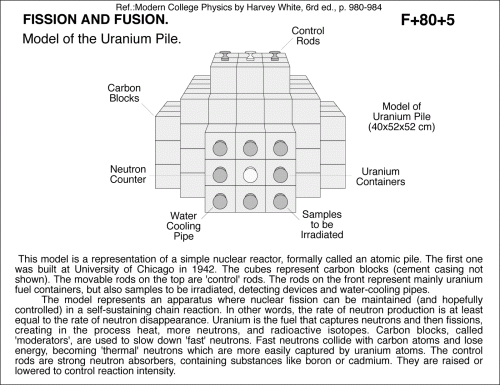Model of the uranium pile.
Primary tabs
Model of the Uranium Pile. This model is a representation of a simple nuclear reactor, formally called an atomic pile. The first one was built at University of Chicago in 1942. The cubes represent carbon blocks (cement casing not shown). The movable rods on the top are 'control' rods. The rods on the front represent mainly uranium fuel containers, but also samples to be irradiated, detecting devices and water-cooling pipes. The model represents an apparatus where nuclear fission can be maintained (and hopefully controlled) in a self-sustaining chain reaction. In other words, the rate of neutron production is at least equal to the rate of neutron disappearance. Uranium is the fuel that captures neutrons and then fissions, creating in the process heat, more neutrons, and radioactive isotopes. Carbon blocks, called 'moderators', are used to slow down 'fast' neutrons. Fast neutrons collide with carbon atoms and lose energy, becoming 'thermal' neutrons which are more easily captured by uranium atoms. The control rods are strong neutron absorbers, containing substances like boron or cadmium. They are raised or lowered to control reaction intensity. Ref.:Modern College Physics by Harvey White, 6rd ed., p. 980-984
UCB Index:
F+80+5
UCB Taxonomy:
Popularity:
- Log in to post comments

